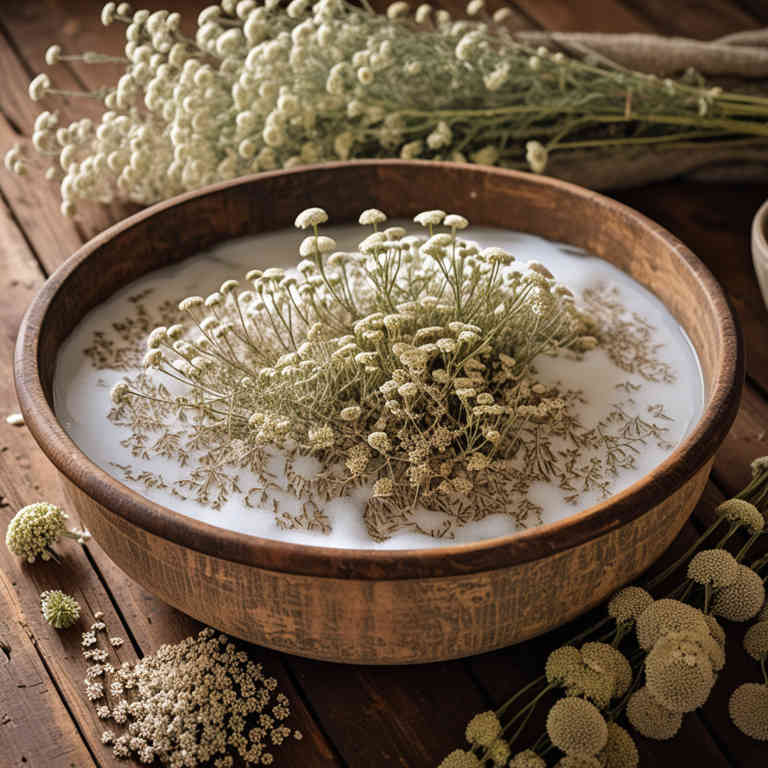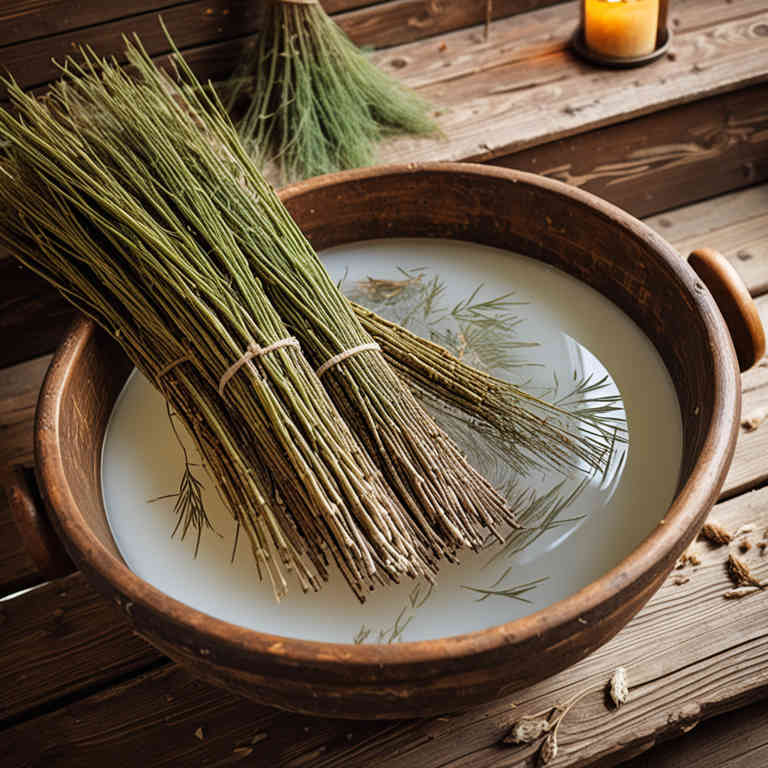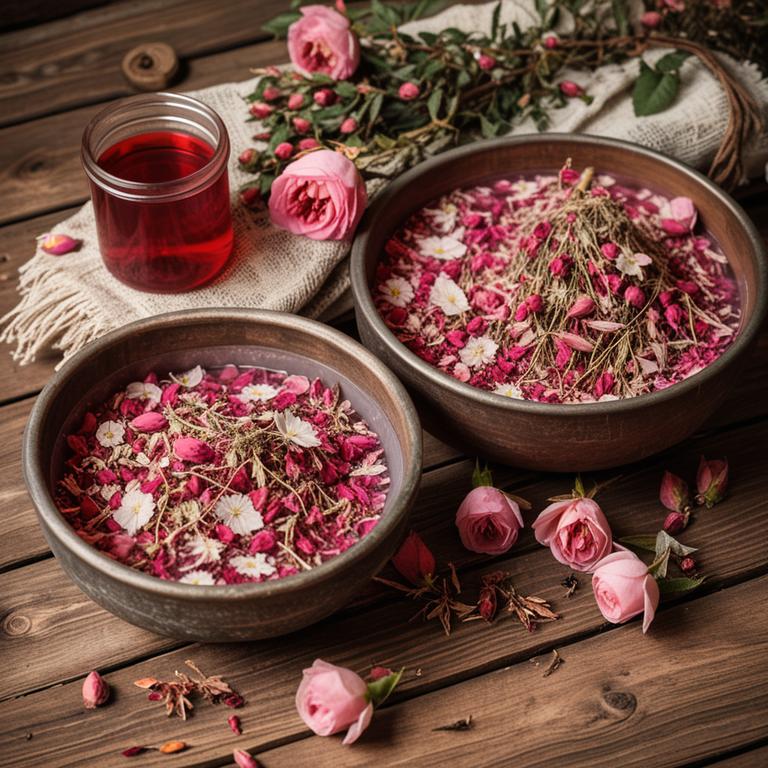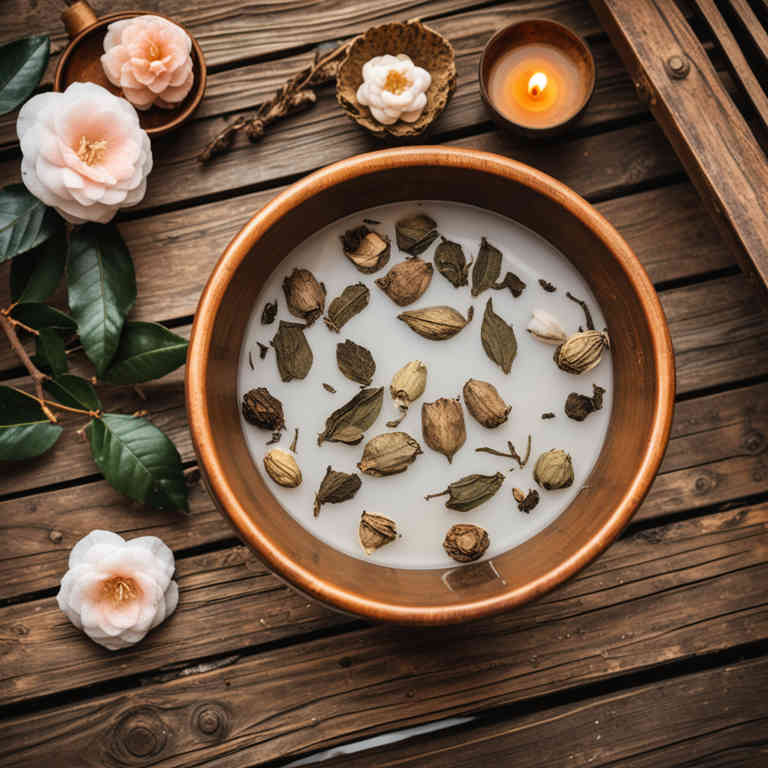10 Best Herbal Baths For Chickenpox

Herbal baths can be a gentle and soothing remedy for individuals suffering from chickenpox, offering relief from the itching and discomfort associated with the rash.
Certain herbs, such as chamomile, oatstraw, and lavender, are known for their calming and anti-inflammatory properties, making them beneficial when added to bath water. These herbal infusions can help reduce skin irritation and promote relaxation, which is especially important during the discomfort of chickenpox. To prepare an herbal bath, simply steep the chosen herbs in hot water and then add the mixture to a warm bath, ensuring the water is not too hot to avoid further irritation.
While herbal baths are not a substitute for medical treatment, they can be a complementary therapy to support the body's natural healing process.
FREE Herb Drying Checklist
How to make sure every batch retains maximum flavor, color, and aroma without the risk of mold or over-drying. Eliminate guesswork and trial-and-error, making herb drying faster, easier, and more efficient every time.
Table of Contents
1. Hypericum perforatum

Hypericum perforatum, commonly known as St. John's wort, has been traditionally used in herbal baths for its potential antiviral and anti-inflammatory properties.
When used in a bath, the herb's active compounds, such as hypericin and hyperforin, may help reduce the severity of chickenpox symptoms by soothing skin irritation and promoting healing. A warm bath infused with a diluted St. John's wort infusion can provide comfort and relief to individuals suffering from chickenpox. However, it is important to note that while some anecdotal evidence supports its use, there is limited scientific research confirming its efficacy for chickenpox specifically.
As with any herbal remedy, it is advisable to consult a healthcare professional before using St. John's wort, especially for children or those with underlying health conditions.
2. Lavandula angustifolia

Lavandula angustifolia, commonly known as English lavender, has been traditionally used in herbal baths for its soothing and antiviral properties, which may offer some relief for symptoms associated with chickenpox.
The essential oils and compounds in lavender possess antimicrobial and anti-inflammatory effects that can help reduce skin irritation and itching, common in chickenpox outbreaks. A lavender-infused bath can promote relaxation and ease the discomfort of fever and restlessness often experienced by individuals with chickenpox. While it is not a cure for chickenpox, such baths may support the body's natural healing process and enhance overall well-being during recovery.
However, it is important to consult a healthcare provider before using any herbal remedies, especially for children or individuals with known allergies.
3. Urtica dioica

Urtica dioica, commonly known as stinging nettle, has been traditionally used in herbal baths for its potential soothing and healing properties.
When prepared as a herbal bath, stinging nettle can help alleviate the itching and irritation associated with chickenpox by reducing inflammation and providing a cooling effect on the skin. The high concentration of silica and minerals in nettle may also support the body's natural healing processes and strengthen the skin's barrier. To use it, fresh or dried nettle leaves are boiled and then allowed to steep, creating a soothing bath solution.
While herbal baths may offer some relief, they should not replace medical treatment for chickenpox, especially in severe cases, and should be used under the guidance of a healthcare professional.
4. Salvia officinalis

Salvia officinalis, commonly known as sage, has been traditionally used in herbal baths for its potential soothing and healing properties.
When infused into bath water, sage is believed to help alleviate the discomfort associated with chickenpox by reducing itching and inflammation. The antimicrobial and antiseptic qualities of sage may also support the body's natural defenses against the varicella-zoster virus. While there is limited scientific evidence specifically linking sage baths to chickenpox treatment, many holistic practitioners recommend them as a complementary therapy.
It is important to consult a healthcare provider before using any herbal remedies, especially for children or individuals with compromised immune systems.
5. Achillea millefolium

Achillea millefolium, commonly known as yarrow, has been traditionally used in herbal remedies for its anti-inflammatory and antiseptic properties.
When used in herbal baths for chickenpox, yarrow can help soothe skin irritation and reduce the risk of secondary infections. To prepare the bath, a handful of dried yarrow leaves is steeped in hot water, then cooled and used as a soothing rinse for the affected skin. The mild astringent properties of yarrow may help to dry up blisters and promote healing.
However, it is important to consult a healthcare provider before using any herbal remedy, especially for children or individuals with known allergies.
6. Calendula officinalis

Calendula officinalis, commonly known as pot marigold, has been traditionally used in herbal baths to soothe the skin and reduce inflammation, making it a potential natural remedy for chickenpox.
The anti-inflammatory and antimicrobial properties of calendula may help alleviate the discomfort and prevent secondary infections associated with chickenpox blisters. To prepare a calendula herbal bath, steep dried calendula flowers in boiling water for several minutes, then allow the solution to cool before adding it to a tub. While some anecdotal evidence suggests that calendula baths may provide relief, it is important to consult a healthcare provider before using any herbal remedy, especially for children with chickenpox.
Overall, calendula officinalis can be a complementary therapy when used safely and in conjunction with standard medical care.
7. Equisetum arvense

Equisetum arvense, commonly known as field horsetail, has been traditionally used in herbal baths for its high silica content and potential antiviral properties.
These baths are believed to help soothe the skin and reduce the discomfort associated with chickenpox by promoting healing and reducing inflammation. The plant contains compounds that may support the immune system, which is crucial during a chickenpox infection. However, it is important to note that while some holistic practices use equisetum arvense for supportive care, it should not replace conventional medical treatments for chickenpox.
Always consult a healthcare professional before using any herbal remedies, especially for children or individuals with compromised immune systems.
8. Chamomilla recutita

Chamomilla recutita, commonly known as German chamomile, has been traditionally used in herbal baths to alleviate symptoms associated with chickenpox.
The calming properties of chamomile, derived from its essential oils, can help reduce skin irritation and inflammation caused by the rash. A warm chamomile-infused bath can soothe the itching and promote relaxation, aiding in the body's healing process. However, it is important to note that while chamomile may provide symptomatic relief, it should not replace conventional medical treatments for chickenpox.
Always consult a healthcare provider before using any herbal remedies, especially in children or individuals with known allergies.
9. Rosa canina

Rosa canina, commonly known as rose hips, has been traditionally used in herbal baths for its soothing and antiviral properties, which may help alleviate symptoms associated with chickenpox.
The high concentration of vitamins, particularly vitamin C, and antioxidants in rose hips can support the immune system and promote skin healing. When infused into bath water, rosa canina can help reduce inflammation, itching, and redness caused by chickenpox blisters. The mild, pleasant aroma of rose hips also provides a calming effect, enhancing the overall comfort of the child during recovery.
While herbal baths should not replace medical treatment, they can serve as a complementary remedy to support the healing process in mild cases of chickenpox.
10. Camellia sinensis

Camellia sinensis, commonly known as the tea plant, is traditionally used in herbal remedies for its soothing and anti-inflammatory properties.
While it is most famous for producing tea, some herbal practitioners have explored its potential in topical applications, including baths for skin conditions like chickenpox. These baths are believed to help alleviate the itching and discomfort associated with chickenpox by promoting skin hydration and reducing inflammation. However, there is limited scientific evidence supporting the efficacy of Camellia sinensis in treating chickenpox specifically.
It is important to consult a healthcare professional before using any herbal treatments, as chickenpox can require medical care, especially in vulnerable populations.